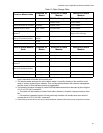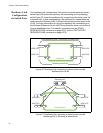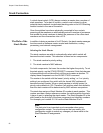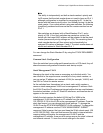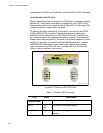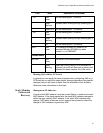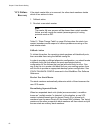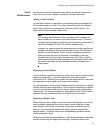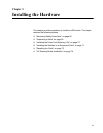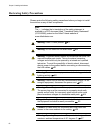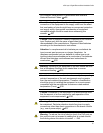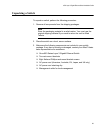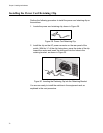
x600 Series Layer 3 Gigabit Ethernet Switches Installation Guide
63
Stack
Maintenance
An operational stack configuration may require occasional maintenance
when you need to add, replace or repairing a broken stack stub.
Adding a Stack Member
An unstacked switch can be added to an existing stack (hot swapped in)
with minimal impact on traffic. To do this, power down the new member
switch, then connect its stacking ports and power on the switch. The
switch will boot as a member of the stack.
Note
The existing Stack Member-ID and the device MAC address will
have no effect on the status of the new member switch. The stack
will admit the new device as ordinary stack member and allocate it a
new Stack Member-ID if its ID is one that already exists.
However, for good practice we recommend pre-configuring the new
member with settings that are appropriate for when the new switch
becomes a stack member. This is to avoid unexpected situations
occurring when the stack is rebooted. For example, if the new
member had a priority setting that was lower than 128 and all the
existing stack members were configured with the default; then, when
the stack is rebooted, the new member would be elected as the
stack master.
Replacing a Stack Member
A stack member can be removed from a stack (hot swap out) with minimal
impact on stack traffic. To do this power-down the stack member,
disconnect its AT-StackXG ports. Insert the new stack member, reconnect
the stacking ports and power-up the new stack member.
You can seamlessly swap a stack member switch into the stack to replace
another with the same configuration. This provides a simple way to replace
an out of service switch with minimal impact, and minimal administration
requirement. You should configure the replacement switch with the same
member ID as its replacement prior to its insertion into the stack.
Repairing a Broken Stub
Stack stubs can occur when a stack fault occurs and results in one of the
stack members assuming the role of a stack master while the original
stack master is still active. In this case, some stack members are still
aware of only the original master while others are only aware of the
second master. The result can be two independently operation stacks,
which are termed “stubs”.
When two stub stacks are reconnected, a dual master situation is detected
and the console log will display the message, ‘duplicate master' was



